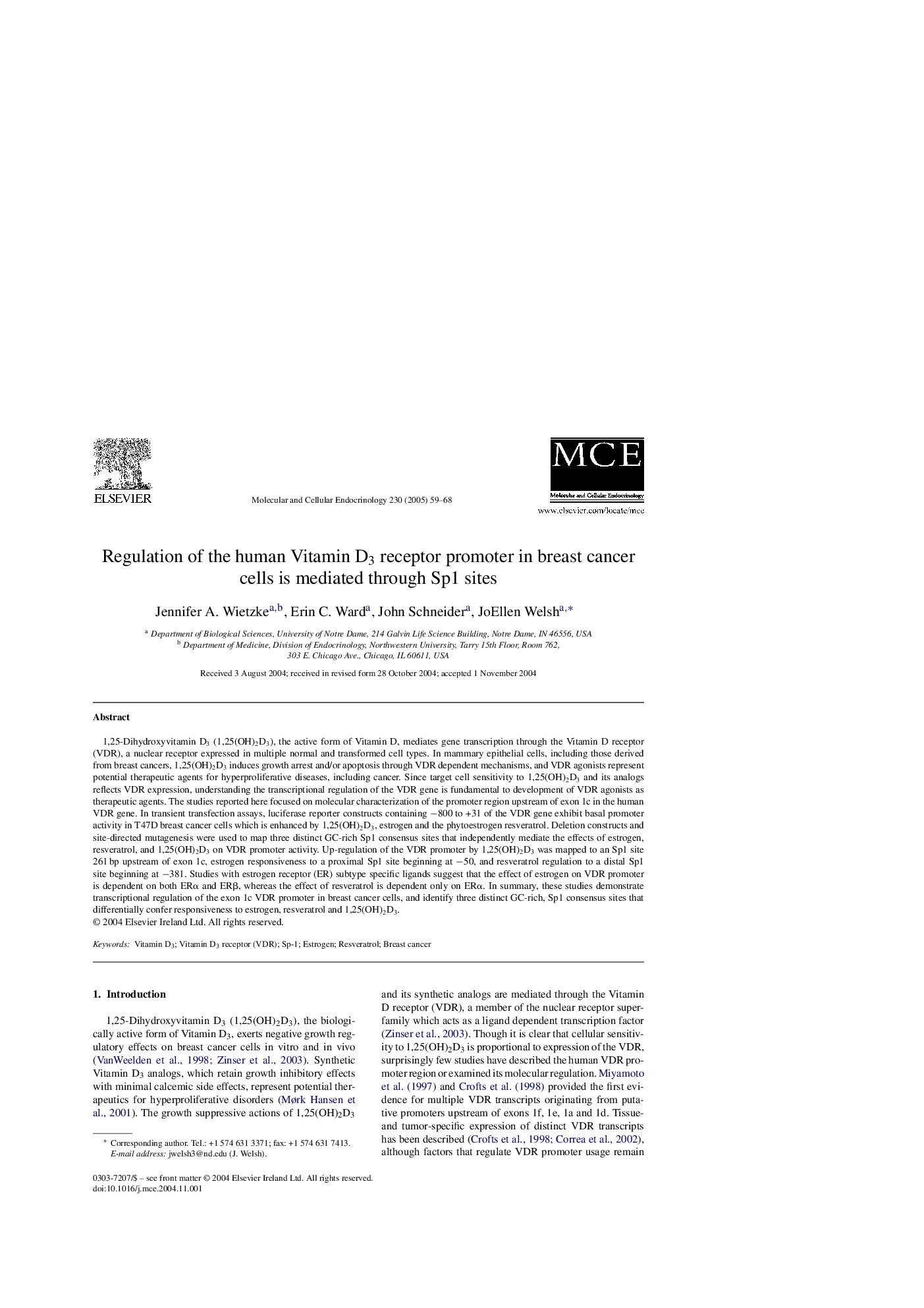| Article ID | Journal | Published Year | Pages | File Type |
|---|---|---|---|---|
| 9915035 | Molecular and Cellular Endocrinology | 2005 | 10 Pages |
Abstract
1,25-Dihydroxyvitamin D3 (1,25(OH)2D3), the active form of Vitamin D, mediates gene transcription through the Vitamin D receptor (VDR), a nuclear receptor expressed in multiple normal and transformed cell types. In mammary epithelial cells, including those derived from breast cancers, 1,25(OH)2D3 induces growth arrest and/or apoptosis through VDR dependent mechanisms, and VDR agonists represent potential therapeutic agents for hyperproliferative diseases, including cancer. Since target cell sensitivity to 1,25(OH)2D3 and its analogs reflects VDR expression, understanding the transcriptional regulation of the VDR gene is fundamental to development of VDR agonists as therapeutic agents. The studies reported here focused on molecular characterization of the promoter region upstream of exon 1c in the human VDR gene. In transient transfection assays, luciferase reporter constructs containing â800 to +31 of the VDR gene exhibit basal promoter activity in T47D breast cancer cells which is enhanced by 1,25(OH)2D3, estrogen and the phytoestrogen resveratrol. Deletion constructs and site-directed mutagenesis were used to map three distinct GC-rich Sp1 consensus sites that independently mediate the effects of estrogen, resveratrol, and 1,25(OH)2D3 on VDR promoter activity. Up-regulation of the VDR promoter by 1,25(OH)2D3 was mapped to an Sp1 site 261 bp upstream of exon 1c, estrogen responsiveness to a proximal Sp1 site beginning at â50, and resveratrol regulation to a distal Sp1 site beginning at â381. Studies with estrogen receptor (ER) subtype specific ligands suggest that the effect of estrogen on VDR promoter is dependent on both ERα and ERβ, whereas the effect of resveratrol is dependent only on ERα. In summary, these studies demonstrate transcriptional regulation of the exon 1c VDR promoter in breast cancer cells, and identify three distinct GC-rich, Sp1 consensus sites that differentially confer responsiveness to estrogen, resveratrol and 1,25(OH)2D3.
Related Topics
Life Sciences
Biochemistry, Genetics and Molecular Biology
Cell Biology
Authors
Jennifer A. Wietzke, Erin C. Ward, John Schneider, JoEllen Welsh,
